Less expeditions, less money
Nepal sees his mountain luck run out. “The government must frame policies to gain a competitive edge”, a report by the Ministry of Culture, Tourism and Civil Aviation said which was quoted in the “Himalayan Times”. The neighbouring countries had started aggressive campaigns to attract more climbers. India had offered a discount of 50 per cent on climbing fees, Pakistan had waived off royalties for all peaks below 6500 meters, the report said. Nepal is charging fees for mountains which are much lower, e.g. for 5500-meter-high Chhukung Ri, a popular trekking peak in the Khumbu region.
![]() read more
read more
New tourist tracking system for Nepal
This man has a vision. “I am thinking to write about how we can make Nepal a developed country in 30 years. It is not an impossible dream and I believe that it is doable”, Mahabir Pun writes on Facebook. The 59-year-old teacher was born in Nangi, a remote mountain village in the west of Nepal. After completing his studies in the USA Mahabir returned to his home country and founded a high school in Nangi. He brought WiFi and thus also the Internet to the mountains. For his achievements Mahabir Pun has received several awards, e.g. in 2007 the Ramon Magsaysay Award which is often considered to be Asia’s Nobel Prize.
Just now Mahabir has started a new project. In the region around the 8000er Annapurna a new tourist tracking system is being tested for six months. It was developed i.a. to locate and rescue single trekkers who have got in trouble. Nearly a dozen foreign tourists have gone missing from several hiking and trekking trails in Nepal over the past decade. I wrote to Mahabir to get some more details. He replied promptly.
Mahabir, did you develop this system by yourself?
“E-Networking Research & Development” is a NGO and I am the chairman. We developed this system with our Japanese partners from Japan International ICT (Information Communication Technology) Association. Hardware was developed in Japan and we worked together for its overall development.
![]() read more
read more
David Goettler: “Step by Step”
For David Goettler, it is the first winter expedition to an eight-thousander. And then actually to Nanga Parbat! The 8125-meter-high mountain and K 2 are the only two remaining 8000ers which are unclimbed in the cold season. The 35-year-old German has teamed up with the Italians Simone Moro and Emilio Previtali. They are trying to reach the summit via the Schell route, starting on the Rupal side of Nanga Parbat. Moro did three first winter ascents of 8000ers (Shishapangma in 2005, Makalu in 2009, Gasherbrum II in 2011). I get David at basecamp where the team is recovering after a few days on the mountain.
David, how do you spend your time?
Reading, writing emails, giving interviews. In addition we are enjoying good food three times a day. Days are passing by amazingly fast. In my tent I am also doing some yoga exercises in order not to degenerate completely.
It is your first winter expedition to an eight-thousander. You have been now on Nanga Parbat for three weeks. How does it feel, everything as expected?
![]() read more
read more
Dujmovits returns to Mount Everest
Two weeks have passed since Ralf Dujmovits has decided to abandon his winter expedition on Nanga Parbat due to the strong risk of icefall. Two weeks to reflect on his experiences in Pakistan and also to look ahead. I call the 52-year-old German climber at home, in the town of Buehl at the foot of the Black Forest.
Ralf, what does German winter feel like, compared with winter in Pakistan, in particular on Nanga Parbat?
I stood at Frankfurt airport and then at the stations in Mannheim and Karlsruhe wearing a short-sleeved shirt, all around me people wrapped up in winter clothes. I had to get used again to the warm temperatures. We have a very warm winter in Germany, a real contrast to what we had in Pakistan. Whatever, I feel that I`m arriving also mentally and I am enjoying the warmth again.
![]() read more
read more
The other view of the 8000ers
When I was a small boy I wanted to be an astronaut. Maybe the reason was that the first moon landing in 1969 was at the same time my first television experience. Then I was six years old. In our neighbors’ house several families were jostling around a small black and white television, which was the only one in our street block. Neil Armstrong, Buzz Aldrin, Michael Collins – the astronauts of Apollo 11 were my heroes. I dreamed of jumping over the lunar surface by myself, watching the earth as a blue ball in the distance. Until today the universe has not lost for me anything of the fascination that I already felt as a child.
The US space agency NASA is not just looking into space, but also from there to our good old earth. It has now published an article with the most important facts about the 14 eight-thousanders adding satellite images of the highest mountains. I want to share these pictures with you – to make you feel a bit like astronauts.
P.S. This time I have sorted the mountains not by altitude but by their fatality rates (look at the percentage).
Very lucky
Ralf Dujmovits’ concerns were not deceptive. The day after he and his Polish companion Darek Zaluski had decided to cancel their winter expedition on the Diamir side of Nanga Parbat, they narrowly escaped an ice avalanche. The two climbers had just build down their Camp 1 at 4900 meters below the Kinshofer route and were on their descent when the avalanche went down. “We were very lucky!”, Ralf writes to me. The 52-year-old and Darek arrived in basecamp safe and sound. As reported Dujmovits had abandoned his plan to climb Nanga Parbat via the Messner route because of the high risk of ice avalanches.
![]() read more
read more
Dujmovits abandons Nanga Parbat winter expedition
The decision was not taken lightly. “After a careful weighing up of the risks – we had climbed up the glacier in deep snow for two hours again – I have decided to abandon the expedition“, Ralf Dujmovits writes in his final report of his winter expedition to Nanga Parbat. His Polish companion Darek Zaluski is supporting the decision, says Ralf: “I had expected a certain level of risks climbing up the Diamir side in winter, especially on the Messner Route. But not these incalculable risks that I ‘m not willing to take. The serious accident on K 2 in 2008, when a part of the large serac above the bottleneck broke, was one of many examples of accidents by ice avalanches that could have been prevented.” In 2008 eleven climbers had lost their lives on the second highest mountain of the world.
![]() read more
read more
Difficult decision
The cloud cover has broken on Nanga Parbat. Snowfall had stopped overnight as predicted by Austrain meteoroligist Charly Gabl, writes Ralf Dujmovits in an email from basecamp. 40 centimeters of fresh snow have fallen. The climbers had two hours of sunshine. For the first time in days Darek Zaluski and Ralf could see the whole Diamir-Face: “Observing it our fear of being in quite a high risk when climbing up the Messner-Route was very obvious. On the huge serac-barrier are two big ice towers which are isolated from the rest. And they don’t look very stable.”
![]() read more
read more



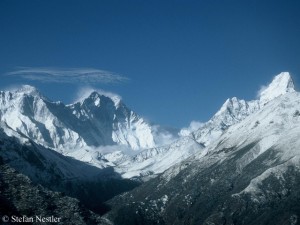

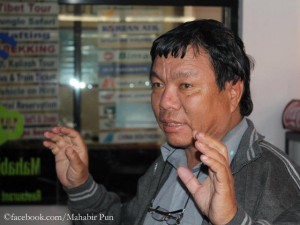
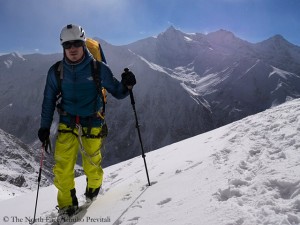
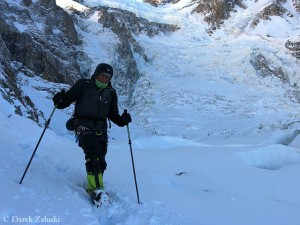
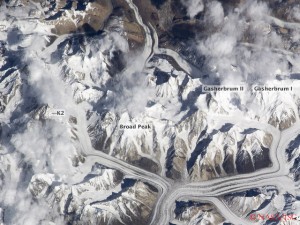
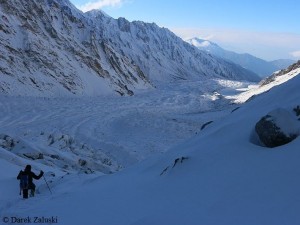
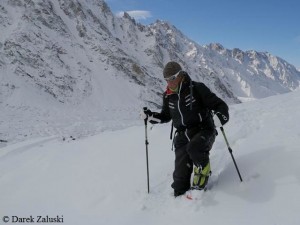
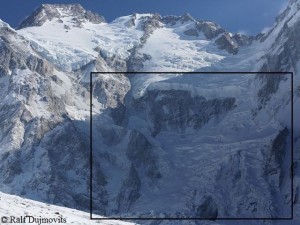

Feedback